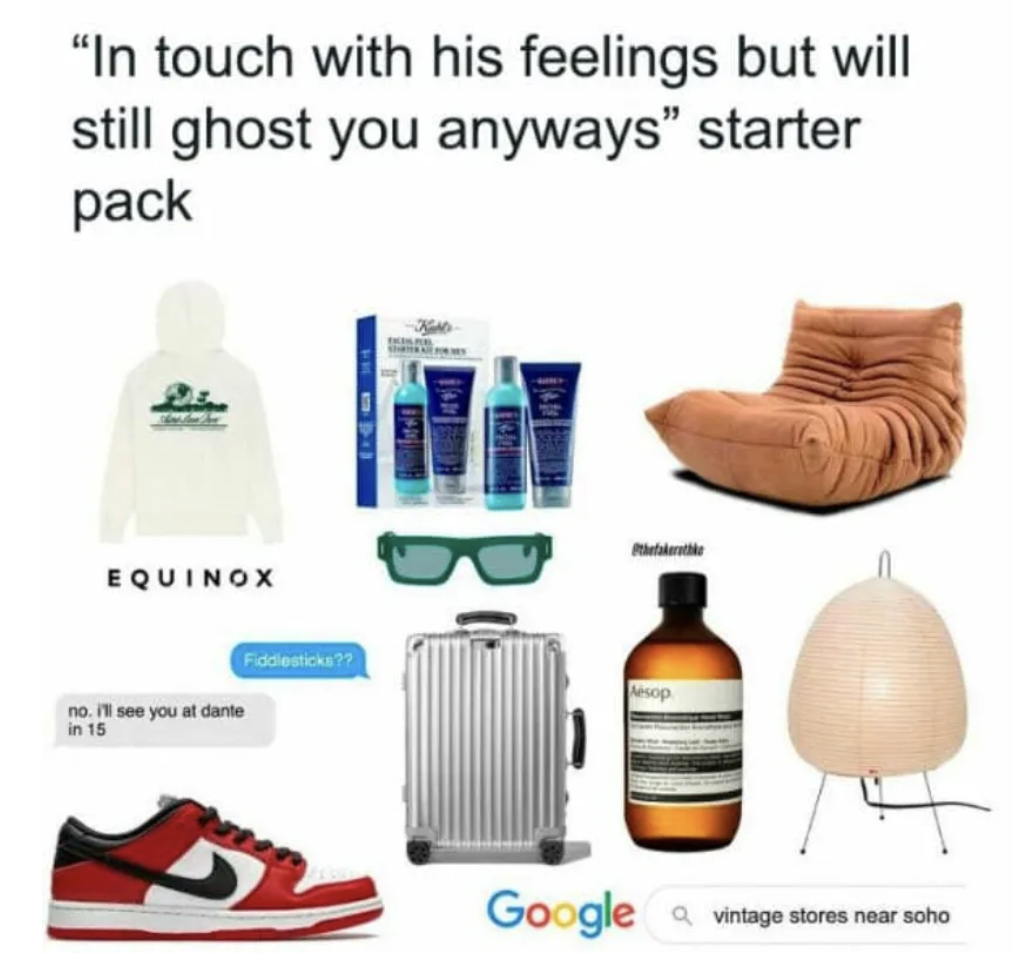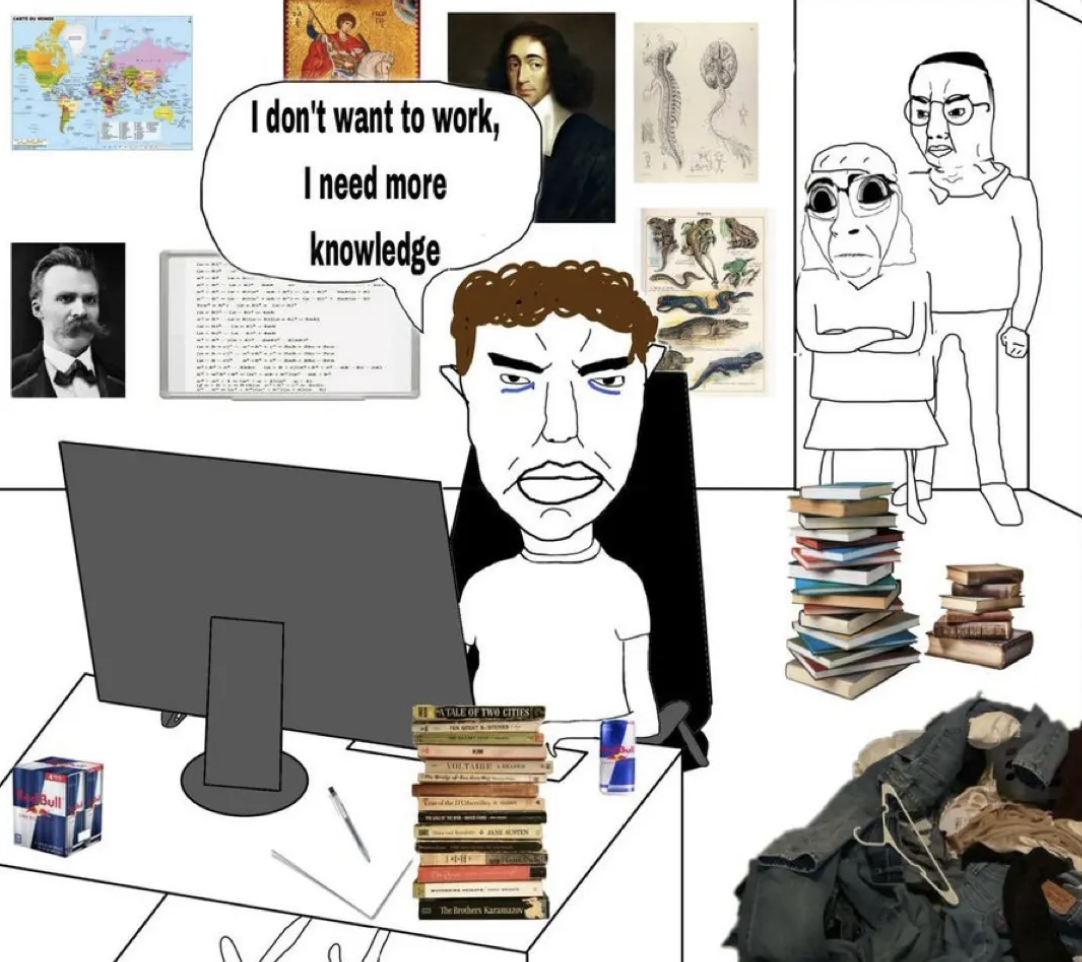As a child of Los Angeles, I spent many summers basking under the Palm Springs sun. The dry heat against my skin, dusty grit in the air, and the towering San Jacinto mountain range off in the distance create a visceral alchemy that always recalibrates my body, mind, and spirit — and makes me feel oh-so grateful to have grown up so close to the coast and the desert. So, when I first saw Saint No’s work, I immediately felt a connection to the way it encapsulates California’s surf and skate culture, with a coat of grittiness à la desert living.
We’re thrilled to introduce Worklife Studio’s latest artist in residence, Saint No.
Growing up in California and later moving to the desert, Saint No is a contemporary artist who creates bold and impactful imagery that embodies an exploration of self and the West. Through motifs inspired by traditional American imagery, archetypes, clichés, and modern mythology, and restrictive color palettes that create an abundance of inspiration, his work is vibrant, warm, and reminiscent of his humble beginnings as a graphic designer. More than that, he is a grounded soul who creates in gratitude for his journey as a self-taught artist and has a creative process powered by his neurodivergent mind:
- As a Californian, sunshine plays a pivotal role in his creative work.
- His pieces blend traditional American imagery, archetypes, clichés, and modern mythology.
- He uses a limited color palette inspired by the heat of the desert.
- An ADHD diagnosis pushes him to be more experimental in his work.
California’s Beaches, Deserts, and His Creative Process
Jessie Quinn: How did growing up on the beaches of California and then moving to the desert influence your work and your creative process?
Saint No: I think growing up in California and going to the beach definitely set that love of the sunshine. There was a step before [moving to the desert] where I lived in Washington, and I really missed the sun. Then I started taking trips to the desert, and I felt like I had enough time near the way and felt a calling to the desert. So I started going down to Joshua Tree and then Mojave and it opened my eyes to how good it felt to be in the sun again. Because of that, everything in the desert felt really inspiring.
Jessie Quinn: What has your creative process been like as a self-taught artist?
Saint No: I had gone to some community college, and then I went to a small art college that was a mess. I feel like I got nothing out of it, and I ended up reteaching myself how to oil paint at first because that’s what I was interested in. And then, after learning how to do that and thinking that’s what I wanted to do as something more realistic, it started feeling very confining, and I quit doing that — eventually, it led me to what I am doing now. The goal is more artistic freedom and expression and less strict, even though I set parameters for myself with the colors so that everything looks cohesive.
I think that going down that whole path of thinking, wanting to do one thing led me to learning that I really wanted to do something that felt more free and that led me to my process now, which is just kind of whatever I want to do. I try to keep things in it that are relevant to how I’m feeling and inspiring, but I try to mix it up somewhat, and the colors help me keep it together.

Creating With Limited Colors
Jessie Quinn: Can you share more about the parameters you set with your color palette?
Saint No: When I started doing this, it was my little side project. I wanted something where I felt like I could really explore different styles of expression in a 2-dimensional manner. But, even more so, l wanted something that I could do to really explore more of myself. That was the goal of starting to do this art — figuring out more of my own shit and how to deal with that. So, I felt that if I put these parameters on it, I could be messier if I wanted. The colors ended up being those parameters. You could also argue that some of the canon is also a parameter — I repeat the girls and the cactus and the big hats — but I like to push those a little bit, too.
Jessie Quinn: How did you choose the color palette?
Saint No: I wanted to represent something that was very lively — something that felt like the heat of the desert sun — and I felt like red was a good color for that. And it works really well with the black and the whites and the other colors.

Community and Collaboration
Jessie Quinn: What role does community play in exploring art beyond canvas?
Saint No: That is a huge part of what I’m always trying to strive for now. Before in my life, I don’t think it made much of a difference to me because I was just not in an open-minded position — I was much more close-minded. I had a lot of things I was feeling that I thought were depression and anxiety. And it was depression and anxiety but it also turned out to be ADHD. I realized that I needed to be a social person and that I wanted a community.
Jessie Quinn: How has community supported your art career?
Saint No: With art, community really helps you get a grasp on everything else behind the scenes with dealing with an art career and staying creative. You meet people anyway and talk about things and get ideas that you would have never thought of.
Jessie Quinn: Did community inspire your skateboard art?
Saint No: That was with my printer. My printer came to me with that idea and I was like, “hell yeah.” I used to skateboard when I was a kid and was totally inspired by the graphics on the boards and the stickers and all of that so it totally made sense.
ADHD as a Creative Force
Jessie Quinn: How do you balance commissions vs. experimenting with new work?
Saint No: I have ADHD and, with ADHD, it’s been a thing where sometimes the commissions don’t hit the same — they don’t get me that same dopamine hit. To balance, I’ll work on commissions in the morning and then keep a sketchbook to draw stupid shit or whatever comes to mind to try to keep that experimental part alive.
Jessie Quinn: Can you share more about creating with ADHD?
Saint No: With ADHD, you get bored easily. Because of that, there’s a constant need of dopamine — but dopamine doesn’t hit the same as it does with other people. You’re constantly looking for more of it, which leads me in my art. It gives me a little push to keep being experimental and to keep looking at other things because I think it also helps me pursue that curiosity. Sometimes, it also allows me to have an interest in artists and artwork that I’m not normally drawn to. I can find an interest in it and then I can find a lot of value in learning about things I don’t think I liked.
Gratitude as a Practice
Jessie Quinn: Your upcoming show seems to be rooted in gratitude. What role does gratitude play in your art?
Saint No: Gratitude has become something I’m trying to put more into my daily practice and trying to realize all the good things daily because it’s easy to go up and down with ADHD and mental health. I feel like trying to focus on gratitude can keep me more on track and keep me feeling good about what I am doing. I started thinking about different ways that I could express gratitude beyond listing the things I’m grateful for. I thought about when you feel good and you are like “fuck, life rules” — that kind of gratitude feeling — I wanted to somehow get that into my work.
Jessie Quinn: How does this play out in your upcoming show?
Saint No: Pencil was the first and most used medium from my childhood. I always turned to pencil when I was a kid — I was always sketching and drawing. Pencil seemed like the ideal choice since it’s something I’ve done since I was a kid and I feel really grateful for being able to do it now. So, I started with graphite-based pieces as a way of expressing gratitude for my work and the life it has brought me. I’m using the series of graphite pieces to inform the show.

Jessie Quinn: How do you stay grounded and connected to yourself and your foundation as an artist in your work?
Saint No: I think through a lot of the imagery. A lot of the imagery I find is stuff that inspired me as a kid growing up in California. I was totally into skulls as a kid and the palm trees and cactus feel reminiscent of childhood surroundings. It’s about embracing what I love and what excites me and if I can’t find that on a daily basis, I’ll go back to those things that excited me as a kid because that was like a level 10.






